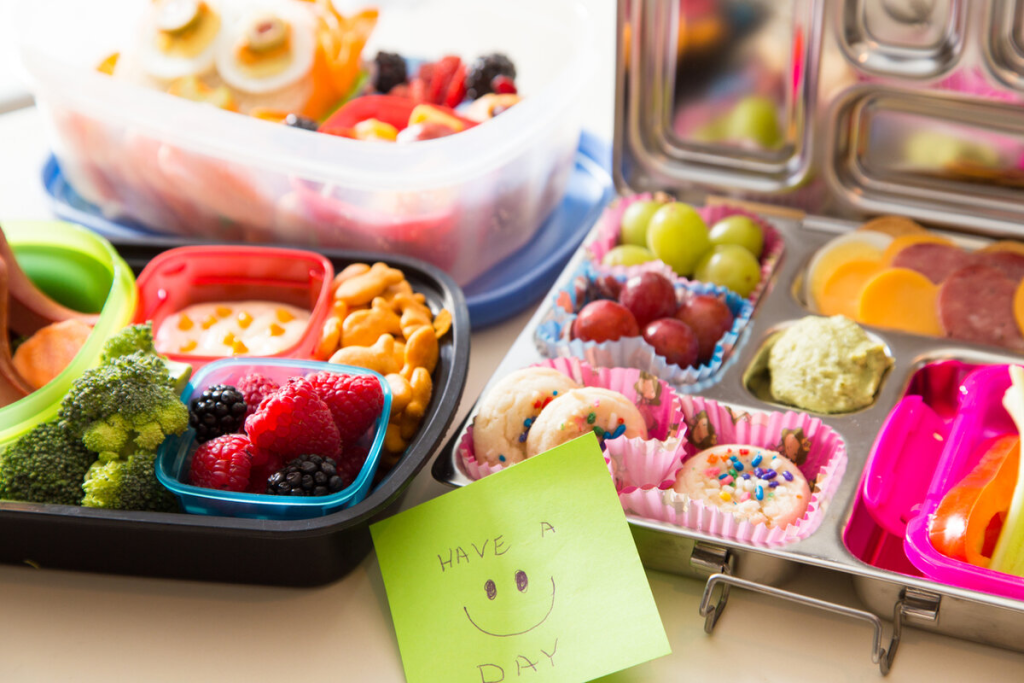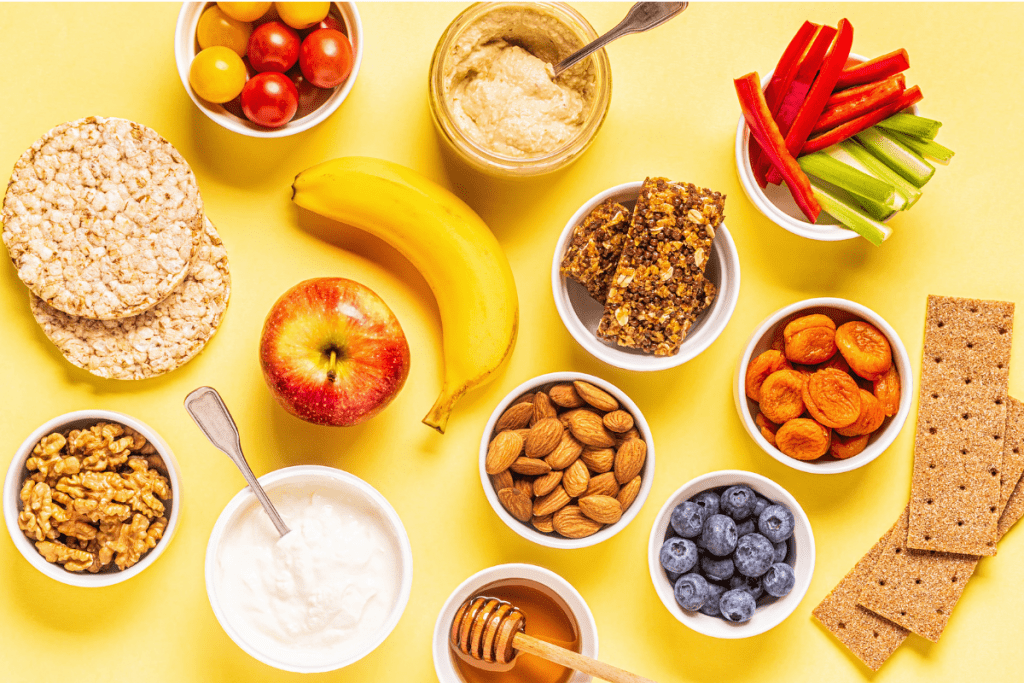Last Updated on October 21, 2025 by mcelik
We all want the best for our children, and it starts with what we feed them. Healthy food, healthy habits”nutritious meals play a key role in their growth and development. They shape their future health and wellbeing. A balanced diet is essential, rich in fruits, vegetables, whole grains, lean proteins, and healthy fats.
Research shows that kids who eat a variety of whole foods like yogurt, beans, eggs, avocados, and sweet potatoes tend to have better health. These foods give them the nutrients they need for growth and development.

By teaching healthy eating habits early, we help our children develop a good relationship with food. This reduces the risk of diet-related health issues later in life.
The early years of a child’s life are key in shaping their nutrition. The food choices and eating habits made then can affect their health for years to come.

Recent data shows worrying trends in kids’ nutrition. The CDC says almost 1 in 10 babies start solid foods before four months. This can raise the risk of obesity later.
The World Health Organization aims for 50% of babies to be breastfed for the first six months. Breastfeeding gives babies vital nutrients and antibodies for growth.
The food choices in infancy and early childhood greatly affect long-term health. Starting with healthy eating habits can lower the risk of diseases like obesity and diabetes.
Breastfeeding offers many health benefits, such as fewer infections and better brain development. The quality of solid foods introduced later also shapes their diet and health.
Understanding childhood nutrition shows the importance of the early years. Making smart food choices for our kids can guide them towards a healthier life.
It’s key to give kids the right food at the right time for their health and growth. As they get older, their diet needs change. They need a mix of foods rich in nutrients to help them grow strong and full of energy.
Starting solid foods with single-ingredient purees is important for babies. This helps spot any food allergies early. Iron-rich foods like pureed meats and iron-fortified cereals are great first foods. But, breast milk or formula should always be their main food.
Toddlers need a balanced diet with lots of different foods. Whole grains, fruits, veggies, lean proteins, and healthy fats are must-haves. It’s also good to limit foods with too much sugar and salt.
School kids need a diet full of nutrients for their growth and energy. Whole grains are a great source of fiber, with kids needing 25 grams a day. Encourage them to eat a variety of foods, including fruits, veggies, lean proteins, and whole grains.

By focusing on nutrient-rich foods for different ages, we help kids develop healthy eating habits. These habits will benefit them for the rest of their lives.
Adding a variety of fruits and vegetables to kids’ meals is key for healthy eating habits. These foods are packed with vitamins, minerals, and fiber. They help kids grow, develop, and stay healthy.
Fruits are sweet and easy to add to a kid’s diet. Some kid-friendly fruits are:
Having different fruits every day is good. It helps kids get lots of nutrients. Try to give them at least one fruit per meal.
Vegetables can be hard for kids to like, but there are creative ways to make them fun:
Studies show that eating a ‘prudent’ diet helps prevent childhood obesity. This diet is rich in vegetables, fruits, legumes, and fish. By choosing whole, nutrient-dense foods, parents can teach kids to eat well for life.
By using these tips in daily meals, we can help kids love fruits and veggies. This sets them up for a lifetime of healthy eating.
Whole grains are key for a healthy diet in kids, giving them the energy to stay active. They are full of fiber, which helps with digestion and can prevent diseases later. Many kids don’t get enough fiber, with a daily need of about 25 grams but most snacks only have 1-3 grams.
Choosing the right whole grains for kids is important. Oatmeal is a great breakfast choice, full of fiber and good for cholesterol. Whole wheat bread and whole grain pasta are also good choices instead of refined grains. Other options include quinoa, barley, and bulgur, which can be used in many meals.
To make whole grains more fun for kids, we can try different ways of preparing them. For example, oatmeal can be flavored with fruits or nuts. Whole grain pasta can be served with different sauces.
It’s important to know the right portion sizes for kids to ensure they get enough whole grains. The daily amount needed varies by age, but a good rule is to make half of their grains whole. For kids aged 2-18, they should have 3-5 servings of whole grains a day.
Switching to whole grains from refined can be tough, as kids might not like the taste and texture. To make it easier, we can start by adding whole grains to their diet slowly. For example, we can use half whole wheat flour when baking.
Choosing whole-grain products labeled as “whole grain” can also help. Look for the “100% whole wheat” stamp on bread. Making whole grains a regular part of meals, like oatmeal for breakfast or whole grain bread for sandwiches, can also help kids get used to them.
Protein is key for kids, helping them grow and develop. It’s needed to build and fix tissues, make enzymes and hormones, and keep them healthy.
Lean meats and fish are great for kids’ protein needs. It’s good to mix these foods into their meals. Here are some examples:
Medical News Today says fish is good for kids’ brains. It gives them omega-3 fatty acids.
For kids on a plant-based diet or with dietary limits, there are many protein-rich foods. Here are a few:
These foods are not just protein. They also have fiber, vitamins, and minerals. They’re great for kids’ diets.
Dairy and fortified alternatives are important for kids’ calcium and vitamin D. They help with bone health. We recommend:
Choose fortified alternatives carefully. Make sure they’re low in sugar and high in calcium and vitamin D.
By adding these protein sources to their diet, parents support their kids’ health and growth. This sets a good example for a lifetime of healthy eating.
Teaching kids to snack healthily is key to their well-being. As parents, we guide them in making good food choices.
Replacing processed snacks with healthy ones is a smart move. For example, choosing nuts and seeds over low-fiber snacks gives kids fiber, protein, and healthy fats.
Some healthy snack options include:
It’s important to balance treats with healthy snacks. We can do this by setting rules and watching portion sizes.
Here are some strategies for balancing treats and healthy options:
It’s vital to limit high-sugar and processed foods. We can do this by checking food labels, cooking at home, and making smart choices when shopping.
Some tips for avoiding high-sugar and processed foods include:
Getting kids to eat healthy is more than just giving them good food. It’s also about knowing their special dietary needs. Understanding these needs is key to helping them develop good eating habits.
For families on plant-based or vegan diets, it’s vital to watch how kids grow and get the nutrients they need. It’s important to monitor their growth and nutrition closely, focusing on vitamin B12 and other essential nutrients. Talking to a healthcare provider or a registered dietitian can help make a balanced vegan diet plan.
Plant-based diets can be full of nutrients and fiber, which are good for health. Kids can get lots of benefits from eating a variety of fruits, veggies, whole grains, and legumes. But, it’s important to watch out for possible nutrient gaps, like vitamin B12, iron, and omega-3 fatty acids, and find ways to fill them.
Handling food allergies and intolerances is a big part of special diets. Common allergens include peanuts, tree nuts, milk, eggs, fish, shellfish, wheat, and soy. For kids with food allergies, staying away from these foods is very important, and having a plan for accidental exposure is also key.
Food intolerances, like lactose intolerance, need different handling. This often means making dietary changes to avoid discomfort. Knowing the difference between an allergy and an intolerance is important for managing symptoms well.
Healthy eating doesn’t have to cost a lot. There are ways to eat well without spending a lot. Planning meals, buying in bulk, and choosing seasonal produce can save money. Also, cooking meals at home with whole ingredients is cheaper and lets you control what’s in the food.
We suggest looking into affordable, healthy eating options. Buying whole grains, beans, and frozen veggies is both nutritious and budget-friendly. By making smart choices, families can eat healthy without spending too much.
Teaching kids to eat healthy is key for their growth and health. By giving them healthy food, we help them make healthy choices for life.
Parents have a big role in teaching kids about food. By eating well ourselves, cooking with them, and making meals fun, we encourage good eating habits. We should offer a mix of foods like fruits, veggies, whole grains, and lean proteins.
Using these methods, we can teach our kids to eat well for their whole lives. Healthy food does more than just feed them; it helps them grow strong. By teaching them to eat right, we help them stay healthy, happy, and strong.
Breast milk is the best food for babies. It boosts their immune system and may lower the risk of obesity and diabetes later. We suggest breastfeeding alone for the first six months.
Start with single-ingredient purees, like iron-rich foods, around 4-6 months. Then, add different fruits, veggies, and whole grains.
Good protein sources include lean meats, fish, eggs, and dairy. For plant-based diets, try tofu, tempeh, and fortified plant milk.
Make them fun by cutting into shapes or serving with dips. Let your child help with meal planning and prep to build a positive food relationship.
Good snacks are fruits, veggies with hummus, whole grain crackers with cheese or peanut butter, and homemade trail mix. Avoid processed and sugary snacks.
Avoid trigger foods and get a meal plan from a healthcare pro or dietitian. For severe allergies, always check labels and be ready for accidental exposure.
Yes, a well-planned plant-based diet can be healthy for kids. Make sure they get enough protein, iron, calcium, and vitamin B12 from plants and supplements if needed.
Involve your child in meal prep and make healthy foods easy to access. Be a good example and make mealtime fun by talking and turning off screens.
Plan meals with seasonal produce, buy in bulk, and cook at home. Shop at farmers’ markets or use cashback apps to save.
Use whole grains like brown rice and quinoa in meals. Include fruits, veggies, and legumes for fiber. This supports healthy digestion and energy.
Subscribe to our e-newsletter to stay informed about the latest innovations in the world of health and exclusive offers!